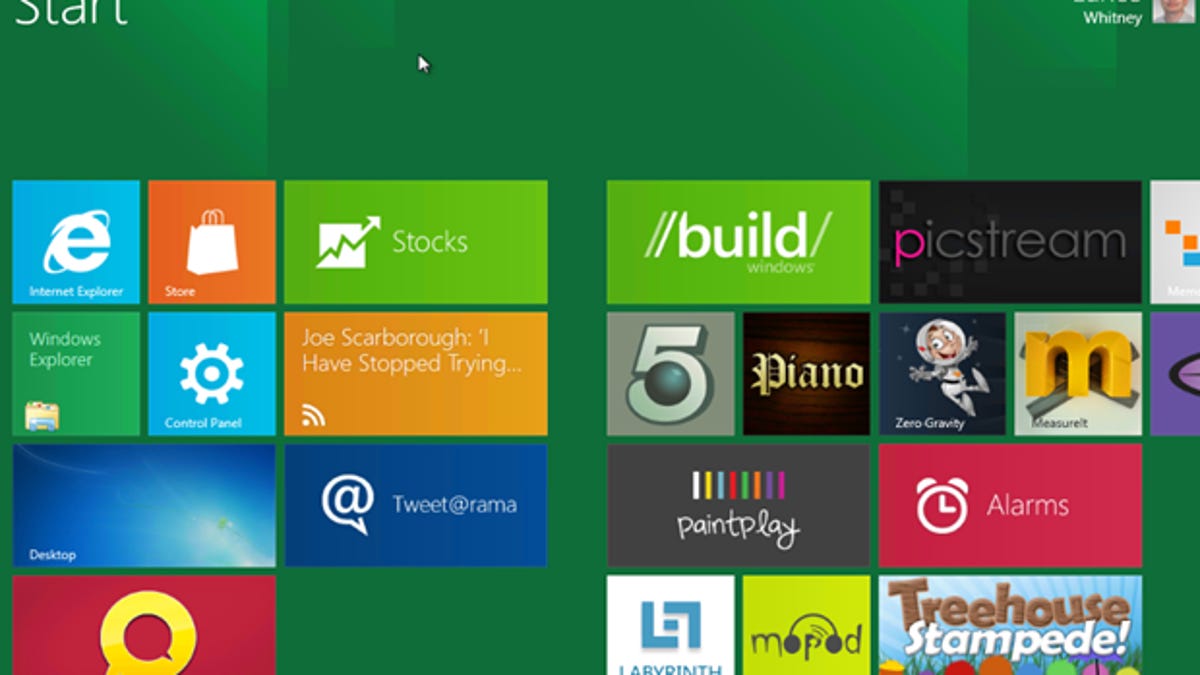Windows 8 plans to better manage your battery life
Microsoft has cooked up some new power-management technology in Windows 8 that it says will better preserve battery life and reduce overall energy consumption.

Designing Windows 8 for virtually any device from smartphone to PC, Microsoft says it's had a key goal in mind for all hardware platforms--energy efficiency.
With laptops and mobile devices slurping up battery power and desktops and servers chewing up electricity, Microsoft has wanted to ensure that any device running Windows 8 can tap into better power management.
"Very small changes done well in Windows can result in very large positive environmental impact because of our scale," Pat Stemen, a program manager on Microsoft's Kernel team, said in the latest Building Windows 8 blog. "In many markets around the world, increasing electricity consumption is putting more demand on every aspect of the workplace to reduce power consumption. PCs are a significant source of potential savings."
Software itself can impact power usage, noted Stemen, since the CPU, hard disk, memory, and other components each consume resources. The operating system and drivers also play a role since they manage the hardware.
With energy savings in mind, Stemen says that Windows 8 has been designed with three goals:
• Aim for power efficiency on all types of hardware. Whether someone is using a Windows tablet or a powerful gaming machine, the idea was to standardize on the same power management features to be consistent across all platforms.
• Provide improved battery life. Windows 7 offered a large reduction in energy use, particularly in the battery life of mobile PCs, said Stemen, and the goal with Windows 8 is simply to maintain that same level amid all the feature changes.
• Apply the smartphone power model to PCs. Smartphones, tablets, and other mobile devices can quickly switch in and out of a low-power mode so they're instantly available when you need them. Microsoft's intent is to apply that same technique to computers running Windows 8.
Looking at Windows 8 itself, Stemen said that the new OS offers three "key innovations to improve how software influences power consumption." Those include the Metro style app model, idle activity, and a new device power management framework.
Metro apps can potentially be running all the time, delivering news, e-mail, and other updates. But Microsoft designed the Metro model so that apps retreat into the background when not needed so as to consume less power. To gauge this, the new Task Manager in Windows 8 shows which specific Metro apps are suspended.
Idle activity is a measure of how much power a component is consuming even when it's idle. In Windows 8, Microsoft has improved the idle activity through what it calls idle hygiene, thereby consuming less power in certain situations.
Finally, Microsoft has created a new device power framework in Windows 8, especially tweaked for mobile devices. The new framework lets devices "advertise" their power management abilities so they can work with a new Windows 8 driver designed to optimize energy usage.
"Battery life and power consumption continue to be some of the most important topics in the computing industry," Stemed noted. "We wanted to give you a look at how we think about power management for Windows 8, and how we measure power consumption on a daily basis. We consider power management a core OS capability that is critical on any chip architecture and any PC form factor."

